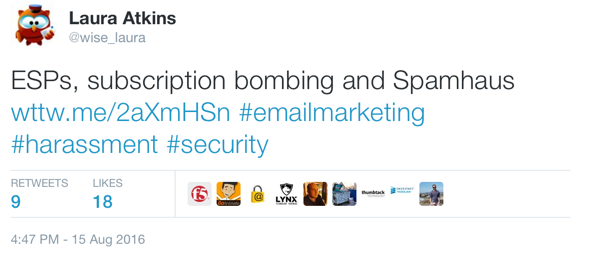CAN SPAM says I can!

Saw a new disclaimer on mail sent to an address harvested off our website today:
disclaimer: This is an advertisement and a promotional mail-in adherence to the guidelines of CAN-SPAM act 2003. We have clearly mentioned the source id of this mail, also clearly mentioned the subject line, and they are in no way misleading in any form. We have found your email address through our own efforts on the web search and not through any other way. If you find this email unsolicited, please reply with “REMOVE” in the subject line and we will take care that you don’t receive any further promotional mail.
Of course, the “we will take care you don’t receive more” is a blatant lie. They always send more. I mean, I guess they adhere to the absolute letter of the law, they never send to the same address. They just harvest new ones.
Then there is the ‘there is nothing deceptive here!’ comment. If that’s true, why is the from address Kimcarter but the message signed by a Matt somebody, Marketing Director? Of course, just 2 weeks ago ago Matt was their Senior Frontend Developer and used the name Glenn Taylor. Before that it was Glenn Taylor, Jim Whitehead, Andrea Sharp, Ryan Heilman.
The Ryan Heilman message is fun. Apparently, Matt’s scraping software had a bit of a burp and was notifying me of problems with my website williamsnickl.com. Yeah. OK. Ryan, er… Matt, er… spammer. Let’s go with spammer.
It did make me smile today when I noticed this particular group of spammers have had to change their sending domain again. Who is going to tell them that having their actual website in the body of the message means changing the sending domain is useless? (not it!)

